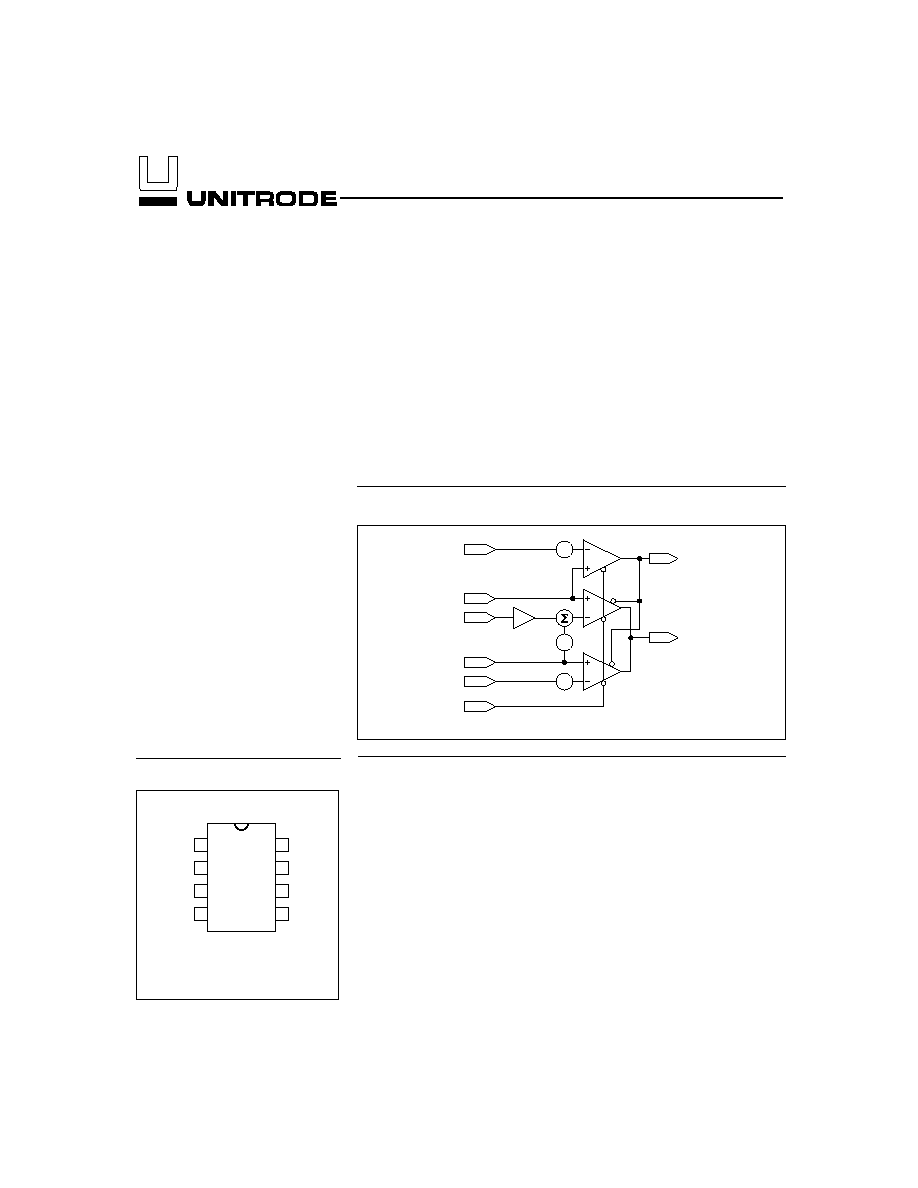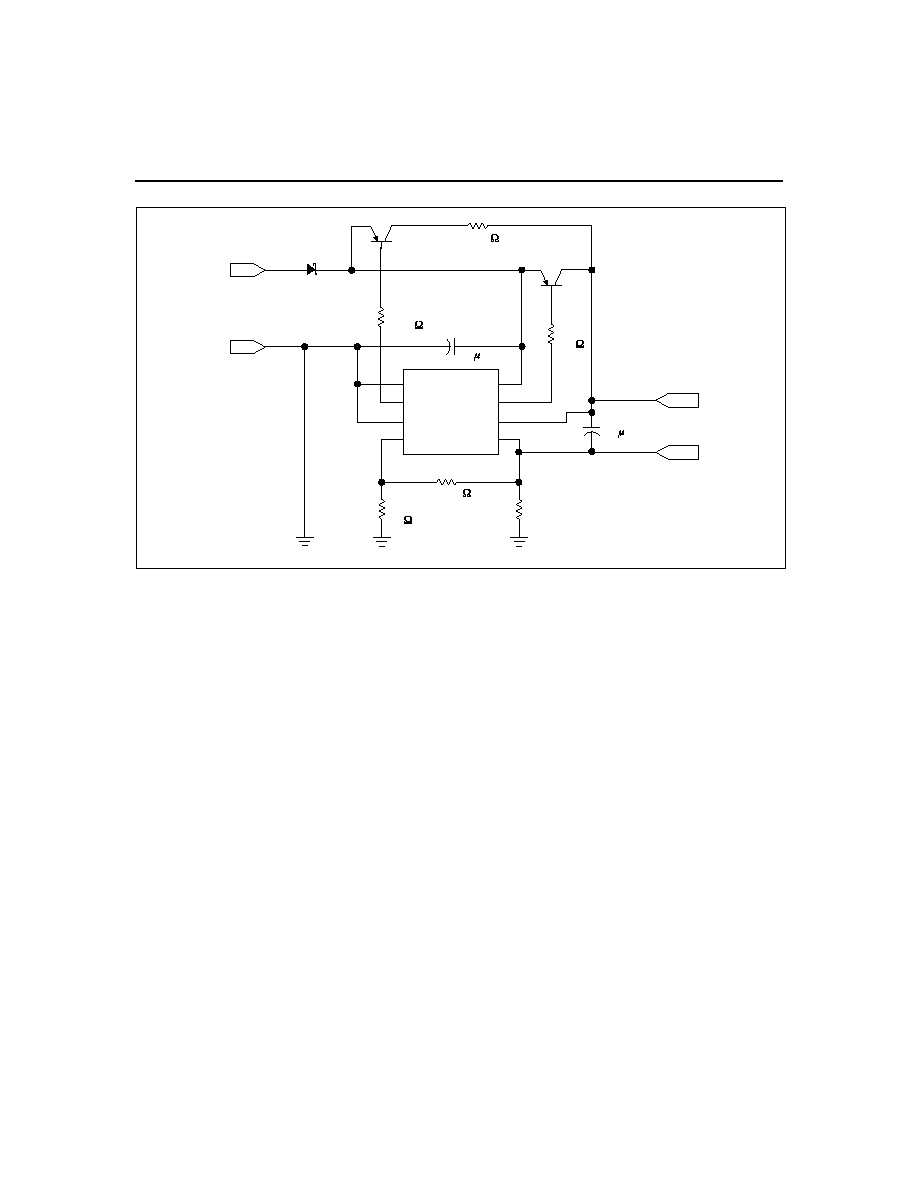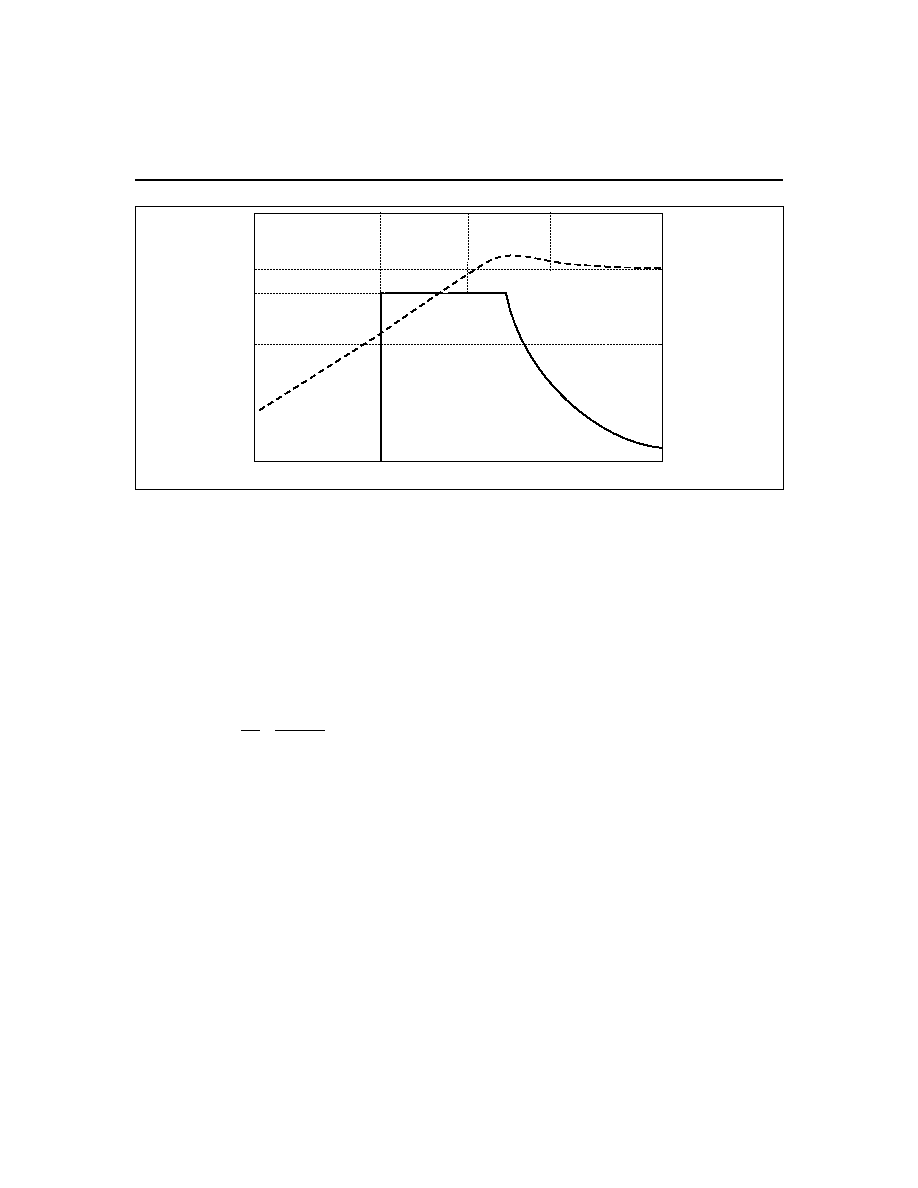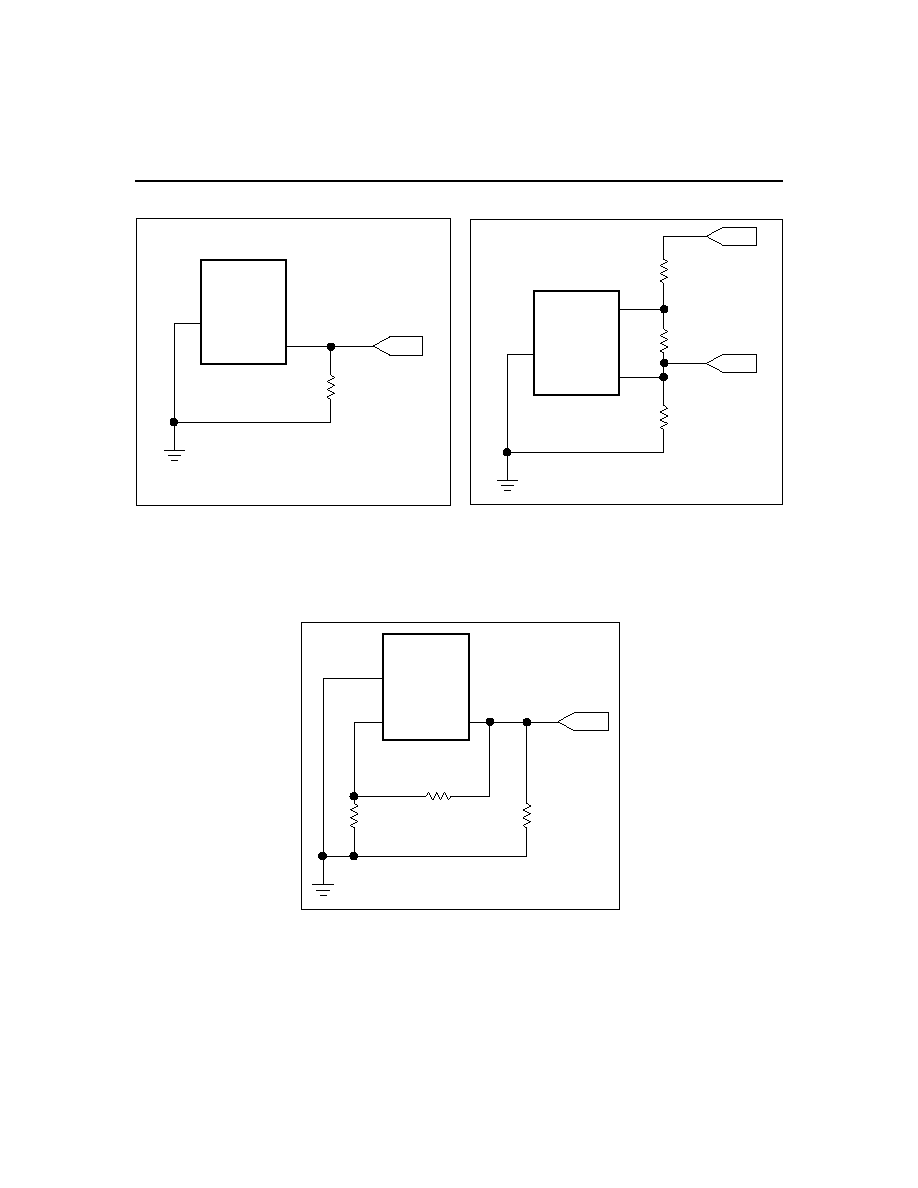 | ÐлекÑÑоннÑй компоненÑ: BQ2056TPN | СкаÑаÑÑ:  PDF PDF  ZIP ZIP |
Äîêóìåíòàöèÿ è îïèñàíèÿ www.docs.chipfind.ru

1
Features
Significant reduction in charge
time with AutoComp charge-rate
compensation
Ideal for low-dropout linear regu-
lator design
1-cell, 2-cell, and programmable
multicell versions
Low-cost charger implementation
with minimum number of exter-
nal components
Programmable current limit to
accommodate any battery size
Interface to external trickle
charger for reviving deeply dis-
charged batteries
High-accuracy charge control
Sleep mode for low power con-
sumption
Direct battery voltage sense
w i t h o u t
r e s i s t i v e
d i v i d e r s
(bq2056 and bq2056T)
Small 8-pin SOIC package
General Description
The bq2056 series ICs are low-cost
precision linear charge-control de-
vices for Li-Ion batteries. With a
minimum number of external compo-
nents, the bq2056 is a complete low-
dropout linear charger. The dropout
voltage is typically less than 0.5V
when the bq2056 is used with an ex-
ternal PNP transistor or P-channel
FET. Features include proprietary
automatic charge-rate compensation
(AutoComp) and a trickle-charger in-
terface output for reviving deeply
discharged cells. The bq2056 sup-
ports a single-cell 4.1V pack and the
2056T supports a two-cell 8.2V pack.
The bq2056V may be externally pro-
grammed for supporting other volt-
ages. All versions feature a sleep
mode for low-power applications.
bq2056/T/V
Pin Connections
Low-Dropout Li-Ion Charge-Control ICs with
AutoCompTM Charge-Rate Compensation
1
PN-205601.eps
8-Pin DIP or Narrow SOIC
2
3
4
8
7
6
5
INH
TRKL
VSS
COMP
VCC
CC
BAT
SNS
10/98 B
BDbq2056.eps
SNS
BAT
K
COMP
COMP
SNS
CC
TRKL
INH
V
SS
+
+
+
2.0V
V
REG
100mV
Functional Block Diagram
Pin Names
INH
Charge-inhibit input
TRKL
Trickle-charge
interface output
V
SS
Ground
COMP
Charge-rate
compensation input
SNS
Current sense input
BAT
Battery voltage input
CC
Charge control
output
V
CC
Supply input

Pin Descriptions:
INH
Charge-inhibit input
When input to this pin is high, the bq2056
suspends the charge in progress and places
the device in sleep mode. When input is low,
the bq2056 resumes operation.
TRKL
Trickle-charge interface output
This output is driven low if the battery volt-
age is less than an internal threshold level
and INH is low. This open-drain output can
enable an external trickle charger to revive a
deeply discharged battery.
V
SS
Ground
COMP
Charge-rate compensation input
This input is used to set the charge-rate
compensation level. The voltage regulation
output may be programmed to vary as a
function of the charge current delivered to
the battery. This feature, called AutoComp,
provides compensation for internal cell im-
pedance and voltage drops in protection
circuitry and therefore may be used to
safely reduce charging time. Connecting
this pin to V
SS
disables the AutoComp fea-
ture.
SNS
Current sense input
Battery current is sensed via the voltage
developed on this pin by an external sense-
resistor, connected in series with the nega-
tive terminal of the battery pack.
BAT
Battery voltage input
This is the battery voltage sense input. It is
tied directly to the positive side of the bat-
tery pack on bq2056 and bq2056T versions.
A simple resistive divider is required to
generate this input for bq2056V.
CC
Charge-control output
CC is an open-collector output that is used
to control the charging current to the bat-
tery.
V
CC
V
CC
supply input
2
bq2056/T/V

Functional Description
The bq2056 supports a precision current- and voltage-
limited charging system for Li-Ion batteries. The no-load
voltage regulation references (V
REG
) for the bq2056 and
bq2056T are maintained at 4.1V and 8.2V, respectively.
The bq2056V provides variable regulation to accommo-
date a wide range of charge voltages and may be used to
meet tighter tolerance requirements through external
trimming. The functional block diagram for the bq2056
is on the first page of this data sheet, and Figure 1 illus-
trates a typical application.
Charge Algorithm
The bq2056 completes the charge cycle in two phases. A
constant current phase replenishes approximately 70%
of battery capacity, while an accurate voltage regulation
phase completes the charge.
Figure 2 shows a typical charge algorithm for bq2056,
including charge qualification, current regulation, and
voltage regulation phases.
Charge Qualification
During charge qualification the bq2056 detects a low
battery and reports this status on pin TRKL. Detection
is accomplished by comparing pin BAT voltage to the in-
ternal threshold V
MIN
. While pin BAT voltage is less
than V
MIN
and pin INH is low, the open-drain output
TRKL is driven low and the voltage/current regulator is
disabled (CC=high-Z). In the bq2056V, low-voltage de-
tection occurs when the voltage on pin BAT is less than
or equal to V
MIND
. As shown in Figure 1, TRKL enables
an external trickle-charge circuit to bring the battery
voltage up to V
MIN
or V
MIND.
Current Regulation
The bq2056 provides current regulation while the pack
voltage is below the voltage limit. Charge-current feed-
back, applied through pin SNS, maintains regulation
around a threshold of V
SNS
. The following formula calcu-
lates the value of the sense-resistor connected in series
with the negative terminal of the battery pack (Figure 3):
R
SNS
= 0.1/ I
MAX
where I
MAX
is the maximum charging current. I
MAX
should not exceed 1A.
An external PNP or power P-FET may be used as the se-
ries pass element with control provided through output
pin CC.
3
bq2056sc.eps
INH
TRKL
bq2056
VS
COMP
VCC
CC
BAT
SNS
1
2
3
4
8
7
6
5
BAT+
BAT-
R6
0.3
C1
10 F
10V
C2
0.1 F
R2 1K
R1
1K
DC+
DC-
R5
2K
R5
2.7K
D1
1N5817
Q1
2N3906
2TX788B
Q2
5 VDC
R3
4.7K
Figure 1. Low-Dropout Single-Cell Li-Ion Charger
bq2056/T/V

Voltage Regulation
Voltage regulation feedback is through pin BAT. This pin
is connected directly to the pack in the bq2056 and
bq2056T. This voltage is compared with the voltage
regulation reference, V
REG
. In the bq2056V, a resistive
divider may be used to generate this input (Figure 4). In
this case, the voltage presented on pin BAT is compared
with the internal reference voltage V
REF
. The resistor
values R
B1
and R
B2
(Figure 4) are calculated based on
the following equation:
R
R
N V
V
1
B1
B2
CELL
REF
=
-
where
N
= Number of cells in series
V
CELL
= Manufacturer-specified charging voltage
Automatic Charge-Rate Compensation
(AutoComp) Feature
To reduce charging time, the bq2056 series uses the pro-
prietary AutoComp technique to compensate safely for
internal impedance of battery and any voltage drops in
the protection circuitry. This maximizes battery's capac-
ity while reducing charging time. Compensation is
through input pin COMP (Figure 5). A portion of the
current-sense voltage, presented through this pin, is
scaled by a factor of K
COMP
and summed with the regu-
lation reference, V
REG
. This process increases the output
voltage to compensate for the battery's internal imped-
ance and undesired voltage drops in the circuit.
For bq2056 and bq2056T, the voltage across the battery
pack, V
PAK
, is
V
PAK
= V
REG
+ (K
COMP
voltage on pin COMP)
For bq2056V, the compensation voltage is added to the
product of the internal voltage reference, V
REF
, and the
gain, KDIV, of the external resistive divider between the
battery pack and BAT input, (Figure 4).
V
PAK
= (V
REF
K
DIV
) + (K
COMP
voltage on pin COMP)
Sleep Mode
The charge function may be disabled through pin INH.
When INH is driven high, internal current consumption
is reduced, and pins CC and TRKL assumes a high-
impedance output state.
4
bq2056/T/V
2056chg.eps
VREG
IMAX
VMIN
External
Trickle Charge
Enabled
Current
Regulation
Current
Voltage Regulation
Voltage
AutoCompTM
Phase
Current
Voltage
Figure 2. bq2056 Charge Algorithm

5
2056CSR.eps
bq2056
bq2056T
bq2056V
V
SS
R
SNS
SNS
3
5
BAT-
Figure 3. Current-Sensing Resistor
2056BVD.eps
bq2056V
V
SS
BAT
R
SNS
R
B1
R
B2
SNS
3
6
5
BAT+
BAT-
Figure 4. Battery Voltage Divider for
bq2056V
bq2056/T/V
2056ACC.eps
bq2056
bq2056T
bq2056V
V
CC
COMP
R
SNS
R
C1
R
C2
SNS
3
4
5
BAT-
Figure 5. AutoComp Circuit




